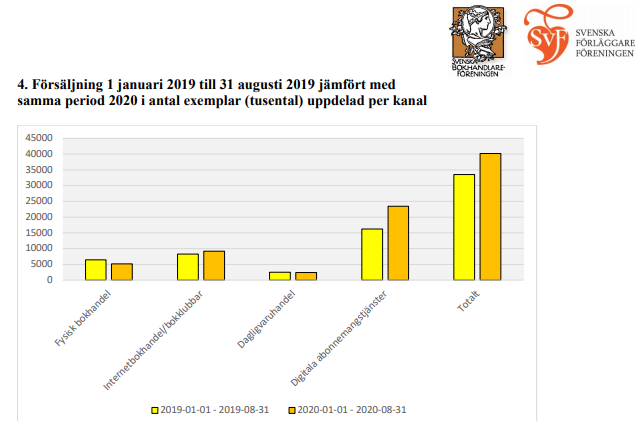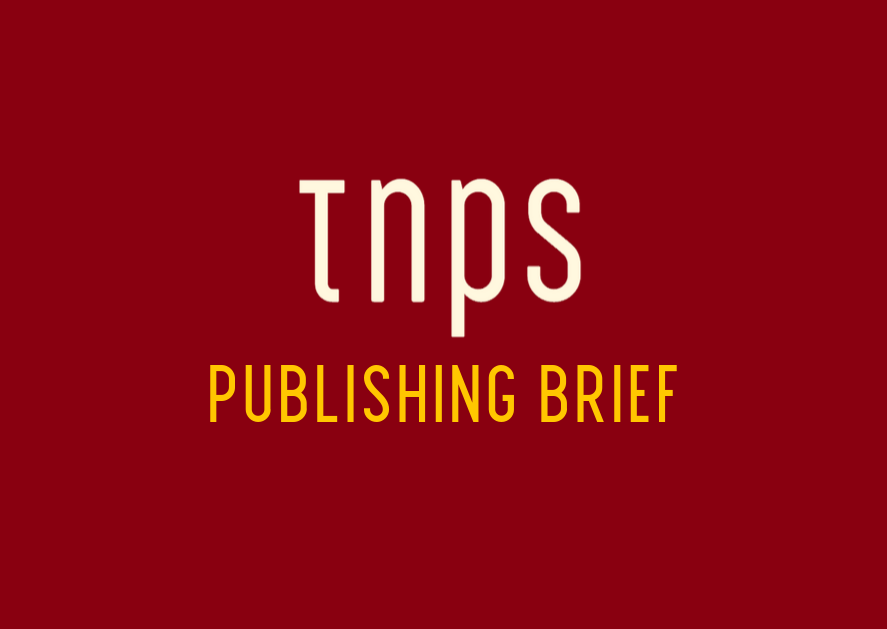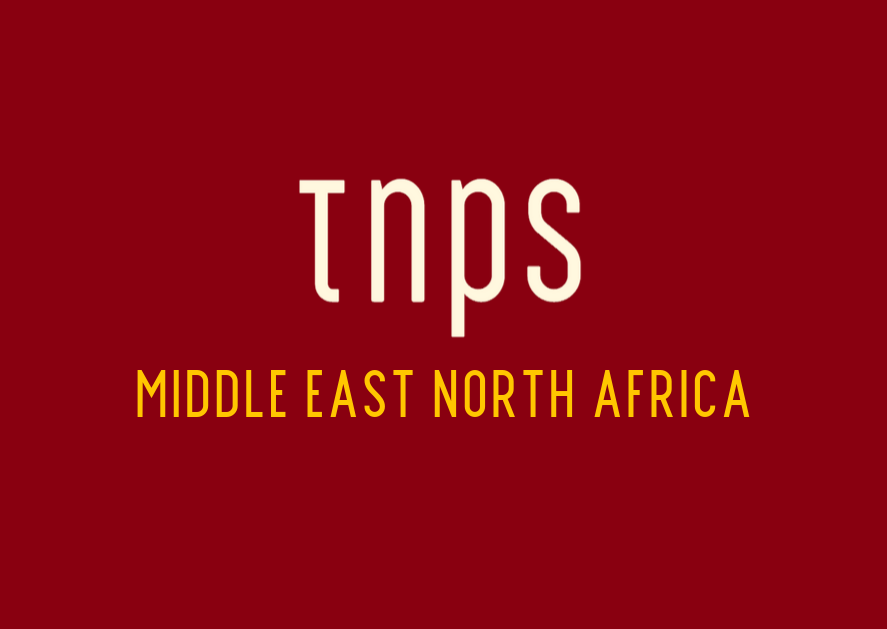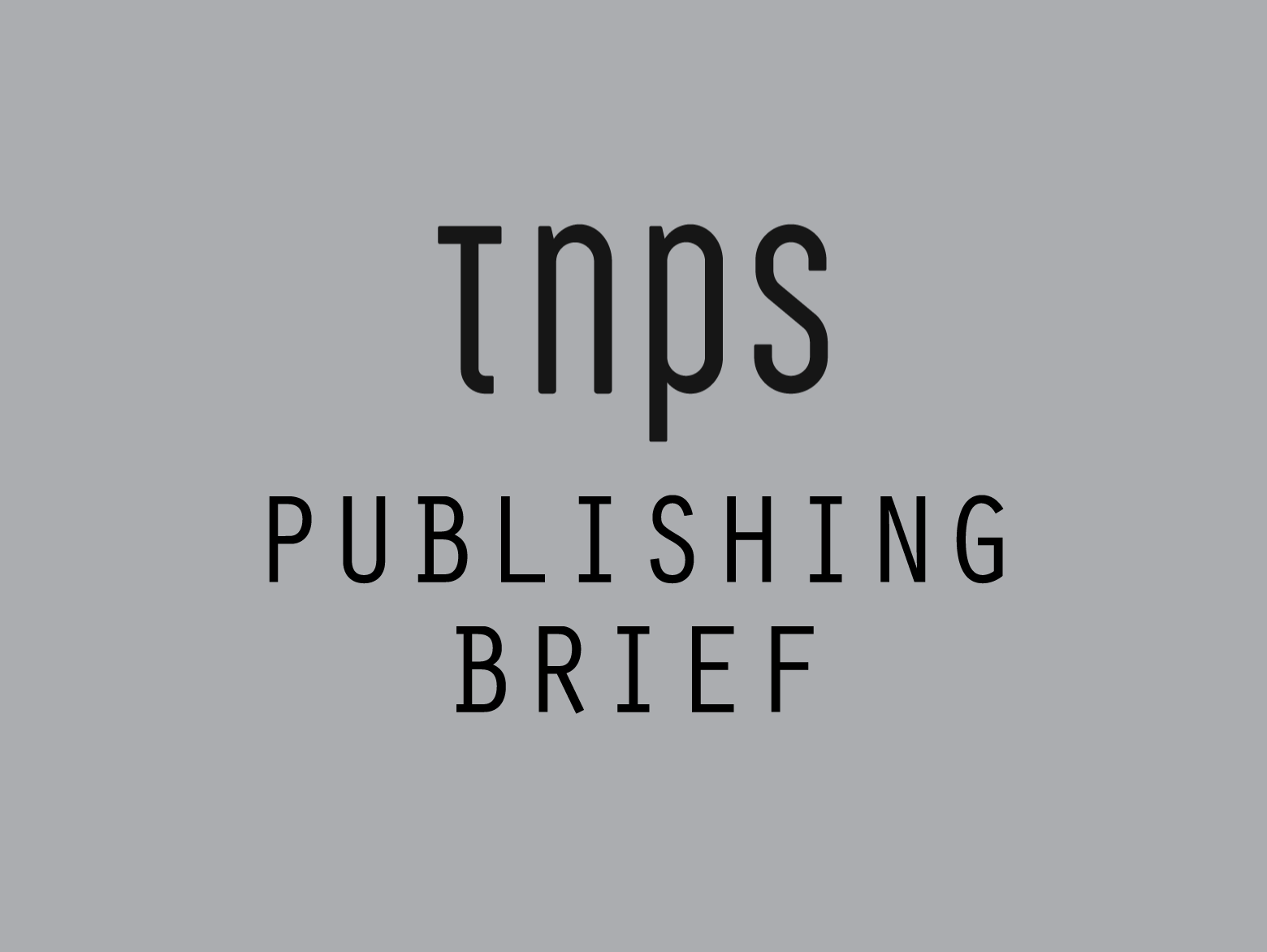Sölve Dahlgren: “Can regular sales channels make up their losses and thereby increase book sales in total to a new record level? Or will Christmas 2020 be the period when the digitisation of the Swedish book market reaches a tipping point?
The Swedish Publishers’ Association released interim figures for the year in time for the Gothenburg Book Fair this month, and to the surprise of some, book sales were up despite (or perhaps because of) the pandemic. But what came as no surprise at all was that subscription led the charge.
From the report summary:
The digital subscription services have grown sharply, which has led to a large increase in the total market during the first eight months of the year. Book sales have increased by 7.4 percent in kronor and 20.0
percent in number of copies sold.The new report confirms the trend that we see in many parts of society during the pandemic. It is digital consumption that is accelerating when we are all required to keep a social distance. For the bookstore in general, the situation is very challenging at the same time as individual booksellers have had increasing sales.
In money, this means that physical book trade went from SEK 690.9 million ($76.5 million) to SEK 571.8 million ($63.4 million), a loss of SEK 119.1 million ($13.2 million) compared with the same period in 2019.
Internet bookstores / book clubs, on the other hand, increased sales by 11.5 percent and digital subscription services by 32.0 percent.
The subscription services (Storytel, Bookbeat, Nextory and Bokus Play) thus had sales of SEK 742 million Jan-Aug 2020. Which in turn means that they will have sales of well over SEK 1 billion together during this year.

Naysayers will seize upon the fact that volume vastly outpaced revenue, and that subscription services are the reason, but what matters here is surely that both revenue and volume are rising.
Over at Boktugg, Sölve Dahlgren, summarising the report, makes the point that there is still more reading happening beyond these statistics.
It can be said that six out of ten books are consumed in digital format. But that is also not really true because we have library lending and lending of books between private individuals. On the other hand, in the subscription services, only listened and read books are counted as sold – in the other channels, some of the books sold remain unread, or not read.
And of course this report does not include the critical Christmas trading, traditionally the period in which print and bricks & mortar store are at their strongest.
Dahlgren again:
Now it remains to be seen what the last four months of the year mean. We know that the digital subscription services will continue to increase during the summer and are unlikely to decrease during September-December. Christmas shopping is the high season for physical bookstores – and online bookstores – by tradition. Will they make up their losses and thereby increase book sales in total to a new record level? Or will Christmas 2020 be the period when the digitisation of the Swedish book market reaches a tipping point?
And of course we need to be asking, how will these results be replicated in other markets during this coming decade?
For emerging markets where regular sales channels face challenges, digital subscription offers an elegant solution to decades struggling to reach consumers in sufficient numbers to make publishing lucrative.
In the mature western markets, vested interests face the challenge of a lifetime as digital subscription and consumption become the new normal.
It’s not so much that resistance is futile, but rather that resistance is increasingly short-sighted and contrary to consumer expectations.
Back when the pandemic began and the science-deniers dreamed the pandemic would all be over by the summer, there was at least some grounds for thinking we might return to the Old Normal that defined the last decade, where digital was being successfully held at bay.
But with the pandemic’s second wave upon us, and talk of a third wave to come (a vaccine, even if one is found, is not going to be an instant fix), with the US and UK leading the way with new lockdowns as autumn unfolds, the only certainty is that consumers will continue the inexorable shift to digital.
As I said here back in April,
The longer the pandemic crisis continues, the longer time for dedicated print readers to migrate to digital, even as print-based stakeholders like booksellers struggle to survive. Many will stay hybrid readers or even transition fully to digital afterwards.
To be clear, there’s no suggestion this will be an extinction-event for print – but when this is over and we return to whatever the new normal may be, digital books will play a far larger part in the lives of consumers and publishers than we could ever have imagined as this new decade began just a few short months ago.
And for publishers who have for years been practicing digital-distancing not because of any irrational dislike of digital but because of fears that embracing digital would strengthen Amazon’s hand, now is not the time to be thinking how to downplay digital in the future.
Rather now is the time to, in the parlance of self-publishing authors, “go wide” to ensure Amazon’s value is collectively balanced by treating other digital outlets seriously, and to embrace counter-intuitive business models like unlimited subscription to ensure a more favourable balance in publishers digital reach and revenue streams.
Because even if the majority of booksellers survive this crisis and when all the restrictions are lifted and consumers are free to spend where they want, we have to understand that a desperately weakened global economy will for the foreseeable future thrust printed books, with their scant price flexibility, into the luxury category for most people around the world.
Whether we like the Swedish experiment or not, the fact is that it works, for both consumers and content providers, and not just in a wealthy nation like Sweden itself, as Storytel’s rapid expansion outside Europe shows.
We can’t put the digital genie back in the bottle. The challenge for publishers in this new pandemic-shaped decade is how to get the best of both worlds.





